17733 Results for “”
-
“Family Photos Gave Me a Deeper Connection to the People Who Lived in the Suburbs”: DP Chananun Chotrungroj on Palm Trees and Power Lines

Palm Trees and Power Lines tells the story of a wild child who, after a series of unmemorable hookups and a reluctant dine-and-dash, finds herself enthralled by a man in his thirties. The feature debut by Jamie Dack evokes the fragility of even the most precocious youth. Cinematographer Chananun Chotrungroj explains how she used framing to channel the protagonist’s state and why she looked to family photos on social media to better understand the film’s story. Filmmaker: How and why did you wind up being the cinematographer of your film? What were the factors and attributes that led to your being […]
by Filmmaker Staff on Jan 24, 2022 -
“Allow Myself to Work in the Same Mode as the Filmmaker”: Editor Christopher Radcliff on Palm Trees and Power Lines


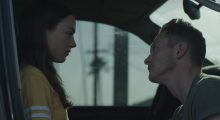
In Palm Trees and Power Lines, the feature debut of Jamie Dack, aprecocious but aimless 17-year-old named Lea finds herself drawn to Tom, a man twice her age who initially appears to give her the much-needed attention she does not have at home. As their relationship continues, however, Tom begins to assert his power in the relationship. Editor Christopher Radcliff explains the importance of keeping the film tied to Lea’s perspective and of editing the film to emphasize the patience evident in the script. Filmmaker: How and why did you wind up being the editor of your film? What were the […]
by Filmmaker Staff on Jan 24, 2022 -
“We Didn’t Edit to the Script; We Edited Only With the Material”: Editor Lívia Serpa on Dos Estaciones

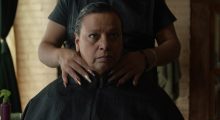
Dos Estaciones pulls equally from documentary and fictional aesthetics to tell its story of a tequila factory in the highlands of Jalisco. It devotes time not just to its protagonist, but also to the process of making tequila, the landscape and other inhabitants. Editor Lívia Serpa recounts how the edit was always based on the material at hand rather than the script and the emphasis on the overarching structure of the film. Filmmaker: How and why did you wind up being the editor of your film? What were the factors and attributes that led to your being hired for this job? […]
by Filmmaker Staff on Jan 24, 2022 -
“This Film Had to Be Made by the Constant Act of Sharing” | Juan Pablo González, Dos Estaciones

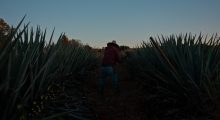
The last two years have prompted much contemplation and reconsideration of the reasons why we make our films as well as the ways in which we make them. What aspect of your filmmaking—whether in your creative process, the way you finance your films, your production methodology or the way you relate to your audience—did you have to reinvent in order to make and complete the film you are bringing to the festival this year? Six months before we filmed Dos Estaciones, my daughter Ema was born. She was born at the peak of the pandemic when there was no testing or […]
by Filmmaker Staff on Jan 24, 2022 -
“This Film Expanded the Way I Think About Beauty and Form”: Editor Todd Chandler on I Didn’t See You There

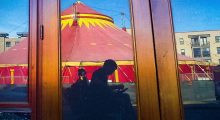
When a circus tent appeared outside the window of Reid Davenport, a visibly disabled filmmaker, he began to contemplate the history of the “freak show” and its relationship to his own aesthetics. This inquiry formed the backbone of I Didn’t See You There, for which Davenport captured images from his wheelchair and sought to make a film about how he sees the world. Below, editor Todd Chandler explains his desire to work on a film so aesthetically different from his own and why he likes to watch other films with his collaborators. Filmmaker: How and why did you wind up […]
by Filmmaker Staff on Jan 24, 2022 -
“In Each Location I Knew How and When the Sun Would Hit”: Gerardo Guerra on Dos Estaciones

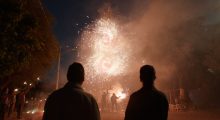
Red dirt, blue sky and green agave mark the landscape of Jalisco’s highlands, and they also form the basis of Juan Pablo González’s Dos Estaciones, which follows the heir to a struggling tequila factory as she attempts to reinvigorate the business in the face of plagues and floods. The film was shot by Gerardo Guerra, who discusses executing complicated setups with limited personnel, learning the finest details of the shooting locations and walking the line between documentary and fiction. Filmmaker: How and why did you wind up being the cinematographer of your film? What were the factors and attributes that led […]
by Filmmaker Staff on Jan 24, 2022 -
“Who Does Visibility Serve and Who Does it Harm?”: Chase Joynt and Morgan M. Page on Their Sundance Doc Framing Agnes


Framing Agnes, the title of Chase Joynt’s (No Ordinary Man) latest genre-queering film – world premiering in the Next section at this year’s Sundance – refers to a controversial trans woman who, in the 1960s, participated in a groundbreaking gender health research study at UCLA. It also refers to the fact that, historically, trans people have never been allowed to leave the frame. Or, paradoxically, enter the frame (if not a blond beauty like Agnes or Christine Jorgensen). So how does Joynt place Agnes in his cinematic frame without framing her? The answer is with an abundance of artistic ingenuity […]
by Lauren Wissot on Jan 24, 2022 -
“The Front Lines of Filming During COVID” | Tig Notaro & Stephanie Allynne, Am I Ok?

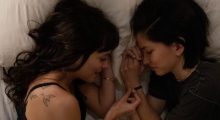
The last two years have prompted much contemplation and reconsideration of the reasons why we make our films as well as the ways in which we make them. What aspect of your filmmaking—whether in your creative process, the way you finance your films, your production methodology or the way you relate to your audience—did you have to reinvent in order to make and complete the film you are bringing to the festival this year? It’s been a wild ride in terms of making our first feature film during times of massive change and upheaval. We were on the front lines […]
by Filmmaker Staff on Jan 24, 2022 -
“We Wanted to Avoid the Cold and Automated Artifice of Fiction Filmmaking”: DP Jarmo Kiuru on Girl Picture


Alli Haapasalo’s Girl Picture follows two teen girls who work together after school at a food court smoothie kiosk. As the best friends swap stories about love, sex and life, the film emerges as both a coming-of-age story and a depiction of unrestricted feminine vitality. Director of photography Jarmo Kiuru describes how she concocted the film’s look and the difficulties of shooting with a reduced budget and amid Finland’s second wave of COVID infections. Filmmaker: How and why did you wind up being the cinematographer of your film? What were the factors and attributes that led to your being hired for this job? […]
by Filmmaker Staff on Jan 24, 2022 -
I Wanted To Go Deeper Than Just a Portrait of a Band”: Rita Baghdadi on her Sundance-Premiering doc Sirens


Trying to make it as a twenty-something in a band is hard enough. But when that band is Slave to Sirens, the Middle East’s first all-female metal group, the stakes and the obstacles can seem off the charts. Which is exactly what makes Moroccan-American director and cinematographer Rita Baghdadi’s Sirens, world-premiering in the World Cinema Documentary Competition at this year’s Sundance, so engrossing. The film focuses on the band’s co-founders and guitarists Lilas and Shery, who over the course of a brisk 78 minutes navigate friendship and sexuality, artistic vision and international fame – all within the explosive confines of […]
by Lauren Wissot on Jan 23, 2022
